9 Stunning National Parks in Sydney: Highlights +Map
Today we bring you a comprehensive guide to National Parks in Sydney. Pulling together the best walks, lookouts, and things to see in each park into one easy to follow list, helping you plan an epic day in the great outdoors quickly and easily.
We have previously written about four National Parks in Sydney you can reach by public transport.
This page contains affiliate links. You can find our full disclosure policy here.
Fantastic National Parks to visit in Greater Sydney
This guide covers all the national parks in metropolitan Sydney. Included is everything you need to decide which park to visit next.
- What are the highlights of each park
- Where are the best lookouts,
- Which walks should you do?
- Are there places to eat nearby?
- Can you camp or stay in the park?
Read on and we will attempt to answer all these questions and more …
Check park alerts before heading to these parks, weather and visitor numbers can see parks close unexpectedly.
National Parks in Sydney and Suburbs
Sydney Harbour National Park
We Sydneysiders owe a great debt to a man called Niels Nielsen, who championed for public space in the eastern suburbs, and conservationists like Eileen and Joan Bradley (no relation to LT William Bradley, for who the point was named ) who spent years regenerating bushland at Ashton Park in Mosman.
Sydney Harbour National Park was established in 1975, with Nielsen Park added in 1978 and North Head in 1984.
Actions like those of these individuals pioneered the concept of a national park on Sydney Harbour.
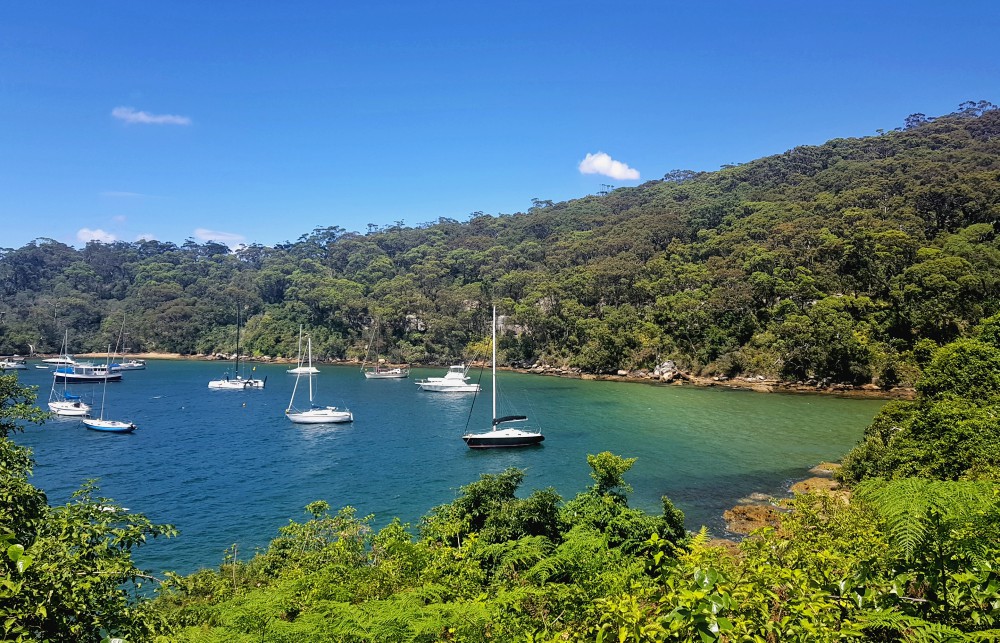
Today the park straddles Sydney Harbour from north to east and contains some of the city’s most beautiful spaces including:
- The headlands – Bradleys Head, Middle Head, Dobroyd Head, Georges Head and Sydney Heads, including the Quarantine Station at North Head and The Gap bluff at South Head.
- The Sydney Harbour Islands – Clark Island, Fort Denison, Goat Island, Rodd Island, Shark Island,
- The Sydney Harbour Beaches – Shark Beach, Reef Beach, Collins Flat Beach, Store Beach, Milk Beach, Queens Beach, Whiting Beach, Athol Beach. And also the city’s three nude beaches, Lady Bay, Obelisk and Cobblers Beaches.
Sydney Harbour National Park sits on the lands of the Eora and Daruk Aboriginal Nations.
The national park also protects the waterway between North Head and Dobroyd Head, known as the North Sydney Harbour Aquatic Reserve.
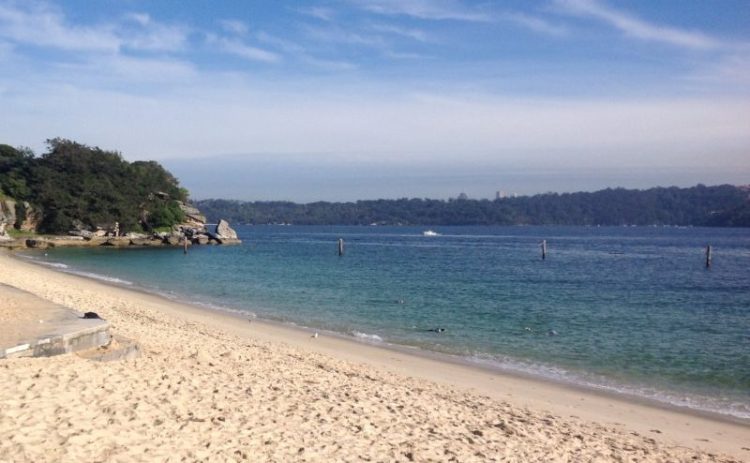
Highlights Of Sydney Harbour National Park
Along with the beaches and bays, the park is home to several historic sites and buildings including Historic Greycliffe House, at Shark Bay, Hornby Lighthouse, and the mast of the first HMAS Sydney at Bradleys Head, the military fortifications at Middle Head and the Aboriginal Engravings at Grotto Point.
Must Do Walks In Sydney Harbour National Park
Where to eat in Sydney Harbour National Park
There are picnic tables throughout the park and plenty of lovely grass perfect for picnicking at Middle Harbour, South Head, and Nielsen Park.
There are cafes at:
- Chowder Bay – Several options including Ripples, Drift, and Frenchy’s
- North Head – Bella Vista Cafe
- Nielsen Park – Nielsen Park Cafe
How to get there
Take the Ferry to Watsons Bay or Taronga Zoo or the bus to Vaucluse, Mosman or Balmoral Beach. Parking can be challenging, so arrive early if you plan to bring your car.
Where to Stay
You can rent either the Gardeners Cottage or Steele Point Cottage in Nielsen Park if you wish to stay awhile.
Related: Check out this list of must-see National Parks in Australia
Ku-ring-gai Chase National Park
Only 25km north of the harbour lies Ku-ring-gai National Park, a park full of pretty coves, spectacular lookouts of Pittwater and Broken Bay and important Aboriginal sites.
Ku-ring-gai National Park sits on Garigal land, and there are over 800 sites of aboriginal importance in its boundary.
Highlights Of Ku-Ring-Gai National Park
West Head Lookout is the Jewel in Ku-Ring-Gai’s crown; it is possibly the most beautiful lookout in Sydney. The park which spans from Turramurra in the cities north to Pittwater which is officially the end of the Sydney suburban area is the 2nd oldest park in the city and third oldest in Australia.
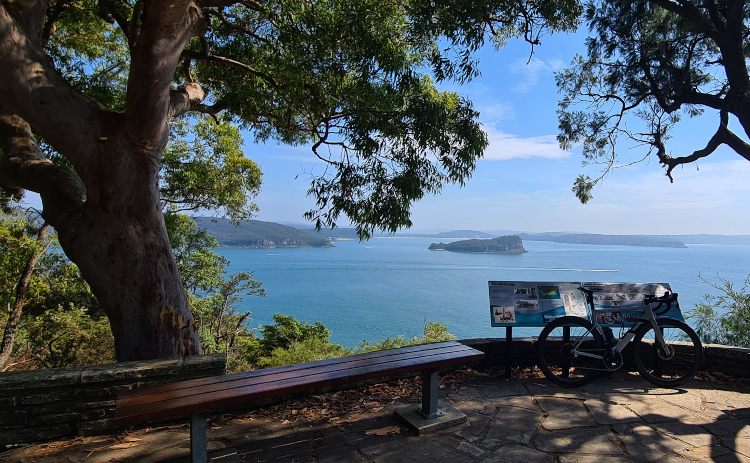
Located in the park are lots of small waterfront villages including Cottage Point, Elvina Bay, Lovett Bay, Coasters Retreat, Great Mackerel Beach and Bobbin Head. You can reach many of these by ferry from Church Point.
The information centre, the Kalkari Discovery Centre, at Mount Colah is a great place to stop by before you explore the park.
Much-loved children’s series Skippy, the Bush Kangaroo, was filmed in Kur-ring-gai National Park.
Top Walks in Ku-Ring-Gai
There are 12 short walks in the park that you will find listed in a handout they give you when you pay your entry fee. There are two relatively easy walks from Bobbin head but many of the park’s walks, even the short ones are grade 4 so not the best choice for beginners or those who are not at least of average fitness.
- The Basin and Mackerel Track – 9.3km return- an enjoyable challenge
- Resolute Beach Track, aka Resolute Loop Trail – 6-8km circuit
- America Bay Walking Track – 1.8km return walk – uneven and a little steep but beautiful (The top photo on this page shows the view)
- Aboriginal Heritage Walk – 4.5km loop that includes Red Hands Cave.
- Koolewong Track – The best easy walk – only 1km and stunning Lion Island views and the central coast.
Where to eat
There is the Waterside Bistro at Bobbin Head Marina in North Turramurra and the famous Cottage Point Kiosk at Cottage Point and Shed at Akuna Bay Marina.
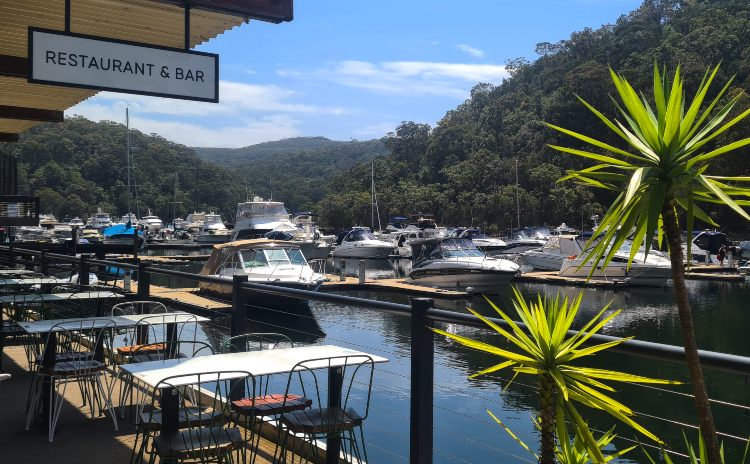
How to get there
Public transport to the park is not as easy as many of the others. You can take a train to Mount Colah, Mount Kuring-gai, Berowra and Cowan railway stations. From here you can walk into different sections of the park. The Northern Beaches suburb of Palm Beach is home to a small section at Barrenjoey Headland. There is limited parking in some parts of the park, so early arrival is best.
Where to stay
There are campsites at the Basin and budget accommodation at the Pittwater Eco YHA at Morning Bay.
Related: Do you know where to find the best waterfalls in NSW?
Lane Cove National Park
Possibly the most suburban of the parks listed here, Lane Cove National Park sits on either side of the Lane Cove River. It extends from West Chatswood to East Ryde and across to Pennant Hills.
It’s especially popular with families, who head to one of the thirty-five picnic areas or three playgrounds in the park.
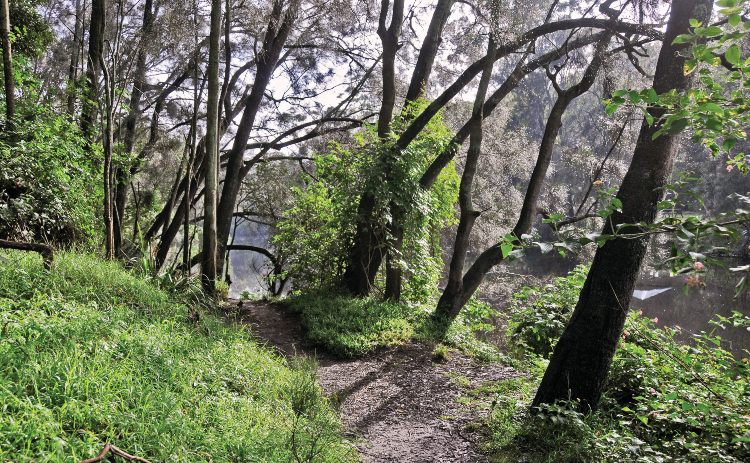
What to do in Lane Cove National Park
There are plenty of things to do in Lane Cove National Park. It’s popular for its short walks, waterways, and picnic areas.
Despite its suburban location, you can still spot a decent amount of wildlife here, particularly swamp wallabies, kookaburras, and bush turkeys.
The best way to enjoy the river that is the focal point of the park is to head to the Lane Cove Boatshed near the Chatswood entrance to rent a rowboat, paddleboat or kayak. It is not advisable to swim in the Lane Cove River.
Lane Cove National Park is on the land of the Guringai people
Top Walks in Lane Cove National Park
- Lane Cove Riverside and Valley Circuit Walk – 11km and relatively easy, this walk is sometimes referred to as the Lane Cove Loop.
- Lane Cove Weir to Boat Shed – 1.3km accessible walk
- Fiddens Wharf walking track – 3km loop that is a little challenging
- Fairylands track – an easy 1km track suitable for families
Tip: The park sometimes closes in the middle of the day because of crowds. It’s best to arrive early in the day or after lunch to find parking.
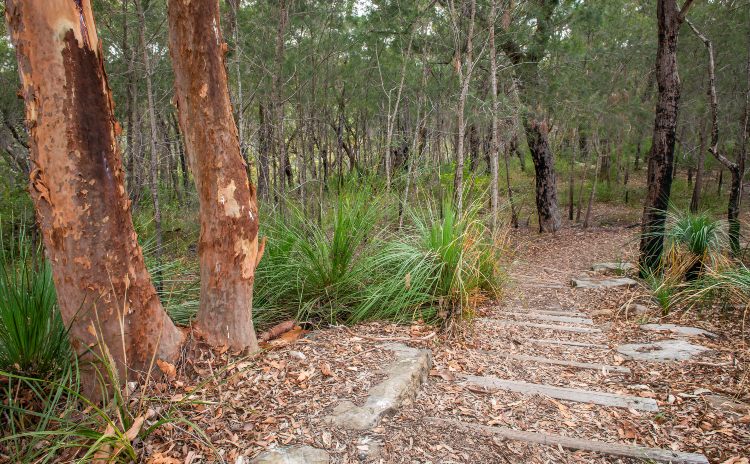
Where to eat
If you don’t fancy packing a picnic, try the Lane Cove National Park Cafe. The Lane Cove Boatshed also sells drinks, ice creams and pies.
How to get there
You can take a bus from Chatswood Station (259 or 545 bus). If you have the energy, it’s about a 1km walk from the station.
By car, you can enter the park from either Chatswood or Pennant Hills. Parking is $8 per car.
Where to stay
If you want to stay inside the park, the best option Lane Cove Holiday Park has campsites, cabins and glamping tents available.
Related: Have you visited these amazing World Heritage sites in NSW?
Kamay Botany Bay National Park
Historically, one of the most important National Parks in Sydney, this was the site of Captain Cook’s landing. One of the few sites continually occupied by its original inhabitants, the park has plenty to see and is a simple day trip from the Sydney CBD.
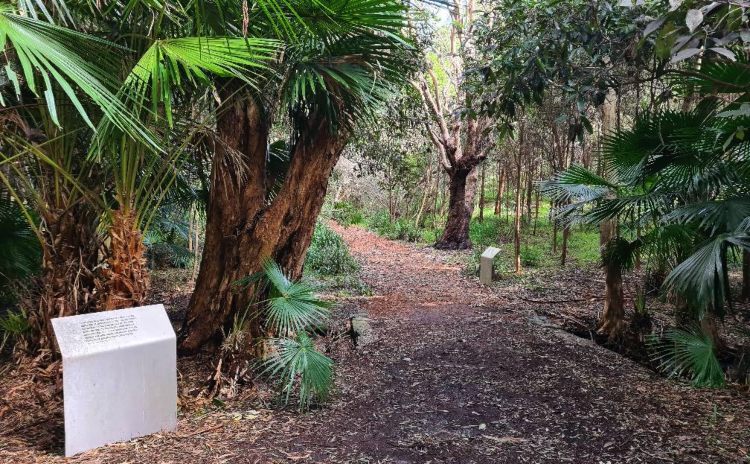
Highlights Of Kamay Botany Bay National Park
Kamay Botany Bay Park spans either side of Botany Bay. There has been talk of a ferry service to connect the two sites, but at this stage, they are a 35km drive apart.
Bare Island and Congwong Beach are the big drawcards at La Perouse. It is also an extremely popular diving and snorkelling site.
On sunny days this place really draws a crowd, so get here early or be prepared to walk quite far from your parking spot in the surrounding streets.
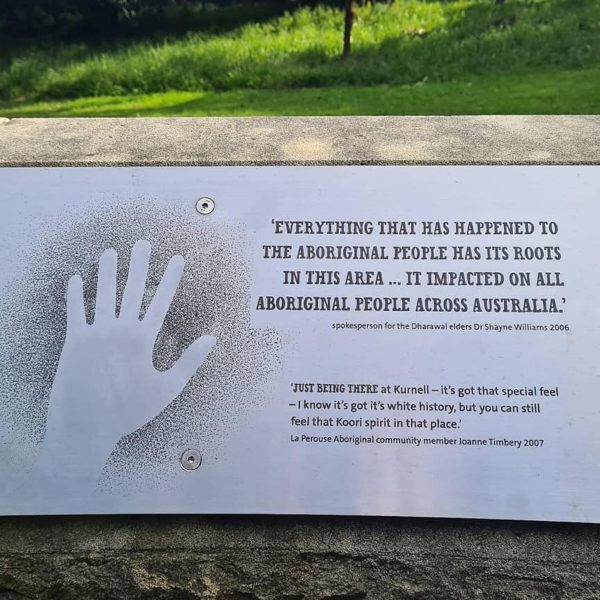
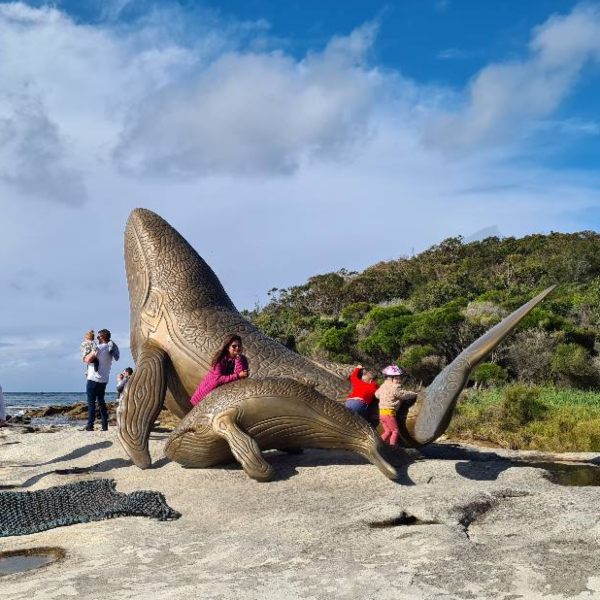
Kurnell attracts visitors to the site of Captain Cook’s Landing Place and also the Cape Solander whale watching platform. This year two new sculptures were unveiled here.
Top Walks in Kamay National Park
From La Perouse
- Henry Head – 4km, about 1hr 15 min
- Cape Banks – 7km, 3 hours
- Jennifer Boardwalk – 700m and wheelchair accessible
From Kurnell
- Burrawang Walk – 1.2km loop, 30 minutes – partially accessible
- Banks-Solander – 700m, 15 mins
- Mura and Yena Track – 2.5km loop, 1 hour
- Cape Baily Lighthouse Walk – 7km return, 2 hours
Where to eat
There are plenty of cafes and restaurants at La Perouse. Bare Grill is an old favourite, and The Boatshed at La Perouse is also popular. You will find a few cafes spread out through the suburb of Kurnell, Cook at Kurnell at the other end of Silver Beach is a good choice.
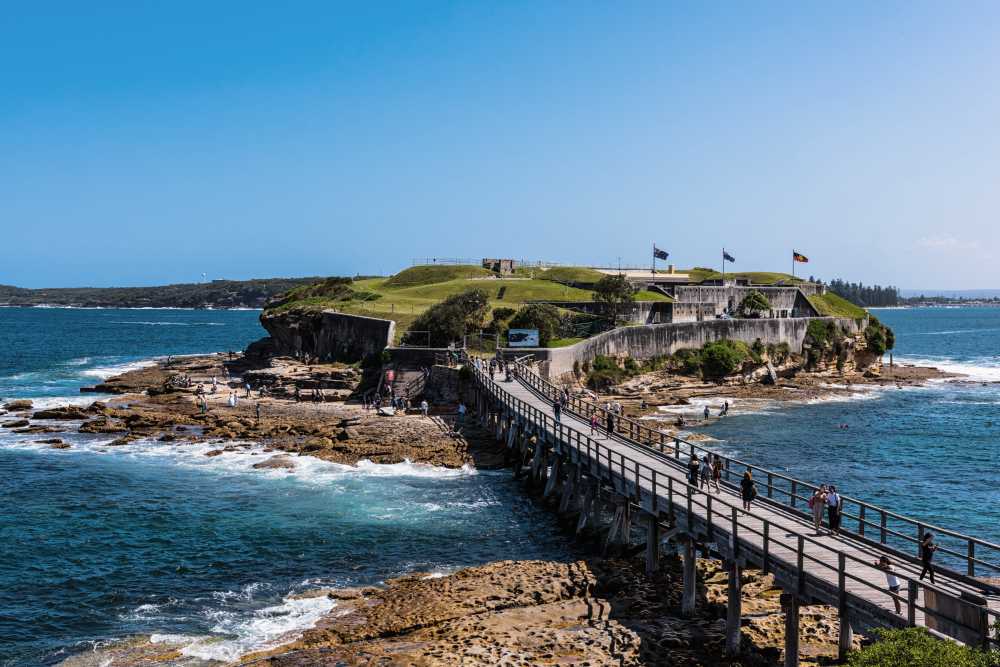
How to get there
Getting to La Perouse is relatively easy with buses from the city centre or Maroubra. Kurnell takes a lot more effort and is best visited by car, although you can take a bus (987) from Cronulla Station or walk via Cape Bailey Track (12km). There is a good amount of parking in Kurnell, but the area in La Perouse fills quickly so you may need to park in surrounding streets.
Where to stay
There are a few hotels to choose from in Cronulla and the Silver Beach Tourist Park at Kurnell in the southern end of the park. There are no hotels or campsites in the northern side of the park at La Perouse but plenty of Airbnb properties.
Related: Check out our list of the best parks in Sydney
Malabar Headland National Park
One of the newer parks in Sydney, Malabar Headland National Park starts on the southern side of Maroubra Beach. To the east of the park the ANZAC Rifle Range
Highlights of Malabar Headland National Park
Dramatic cliffs, lookouts at Magic Point and Boora Point, and the graffiti-covered Malabar Battery, and some fantastic whale watching options.
Malabar Headland National Park sits on Bidjigal and Gadigal land.
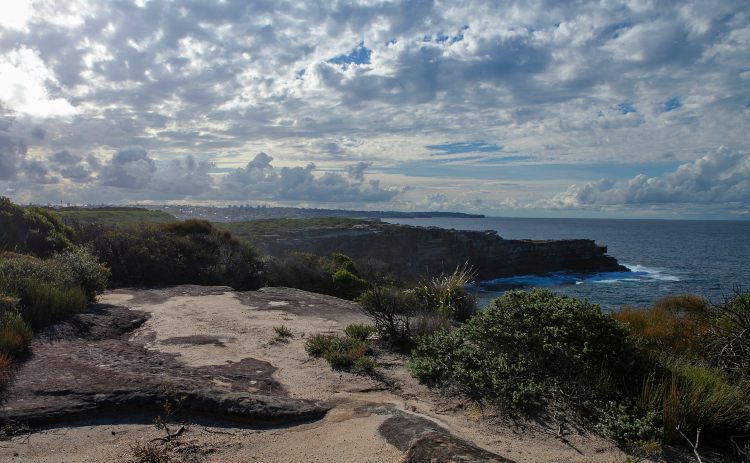
Walks in Malabar Headlands National Park
- Western Escarpment walking track
- Boora Point Walking Track – 3.7km
- Malabar Headland Walk – 6.4km circuit walk
Tip: Always check this park is open before you head out. It borders a rifle range in the east and this section is closed every Saturday and the first and third Sunday of the month. It occasionally closes during the week, so check here first.
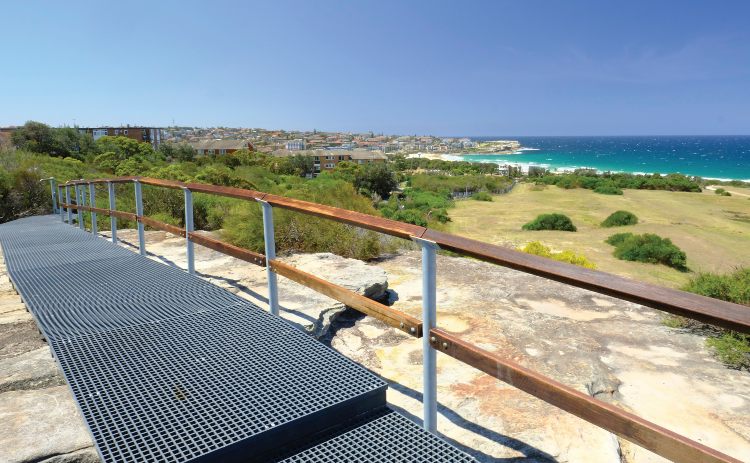
How To Get There
There are two entry points to the park, Pioneer Park in Malabar, or the South Maroubra Surf Club.
Take the 396 or 397 bus from the Central Station to Maroubra Beach – say hi if your bus driver is wearing a black pork-pie hat, it’s likely to be Charles 😉
Georges River National Park
Georges River National Park in Sydney’s southwest comprises a mangrove swamp, wetlands, and sandy riverbanks. One of the smallest national parks in NSW has long been a popular picnic spot for families; They actually called one of the adjoining suburbs Picnic Point.
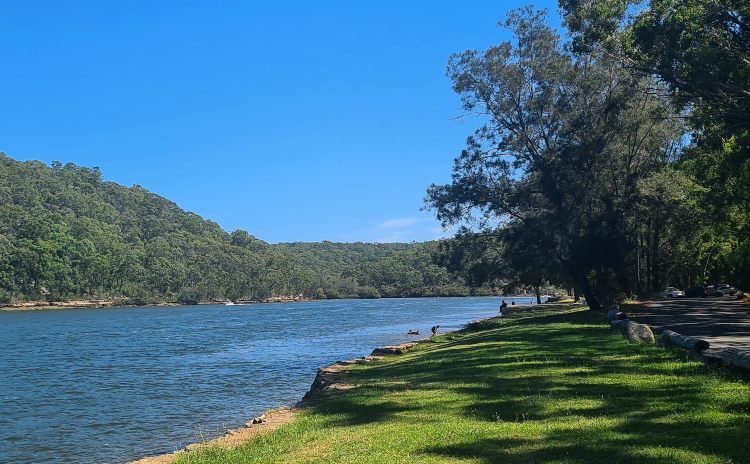
Highlights Of Georges River National Park
People flock to Georges River National Park to enjoy its waterway; it’s especially popular with waterskiers, jet ski riders and fishers.
The Georges River, know to the aboriginal peoples as Tucoerah River.
Walking tracks in Georges River National Park
There are only two official tracks in the park and while both walks are short, we rate them moderately hard and uneven in spots. Be sure to have decent shoes on when doing these.
- Ridge Walking Track – a 1.6km short but not walk from Burrawang Beach to Cattle Duffers picnic area
- Yeramba Lagoon Loop Track – 1.8km walk through wetlands is steep in parts and has lots of steps, but it should only take you about 40 minutes. It’s a must for birdwatchers, with over 100 birds being sighted in this area.
The park sits on Dharug and Dharawal country with Salt Pan Creek, a shelter site for displaced Aboriginal People in the mid-1900s.
Tip: Bull sharks have been found in the deeper water here, so swim at your own peril!
Where to eat
There are no cafes on-site, Elatte Cafe in nearby Padstow Heights is a good coffee stop en route, but most people pack a picnic.
How to get there
Best access is by car; if you need to take public transport you can walk 3km from East Hills Station to Yeramba Loop Trail or the 923 bus from Padstow Station will get you within 15 minutes walk from the Revesby Beach end of the park. There is a good amount of parking here.
Where to stay
There is no accommodation in the park. You could consider an Airbnb in nearby suburbs.
Royal National Park
Australia’s oldest national park, the Royal was the second national park to be declared worldwide. It offers beautiful, often deserted beaches, walking tracks for all fitness levels, dozens of picnic areas and some great hidden swimming holes.
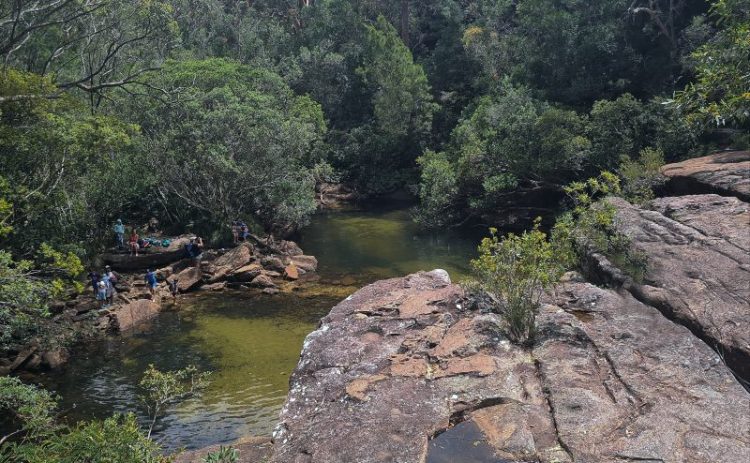
Highlights of the Royal National Park
The Royal National Park is one of the most visited in NSW, its proximity to Sydney and some pretty special natural features make it a must-visit for many. There are some fascinating rock formations like Wedding Cake Rock, Figure 8 Pools and Eagle Rock. Three beautiful beaches, Wattamolla, Garie and Burning Palms are also very popular.
The Royal National Park is on Dharawal Country
But there are many lesser-known and equally beautiful waiting to be discovered like Karloo Pool, Winifred Fall and Curracurrong Falls, a waterfall that falls directly to the ocean as well as, of course, the rock engraving site at Bundeena
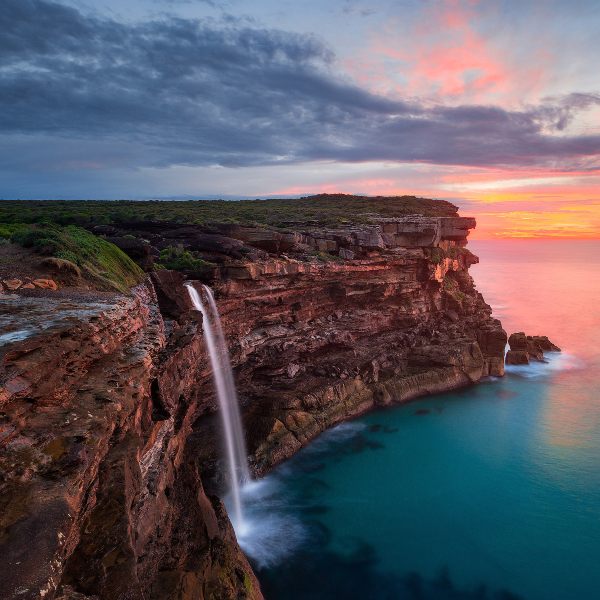
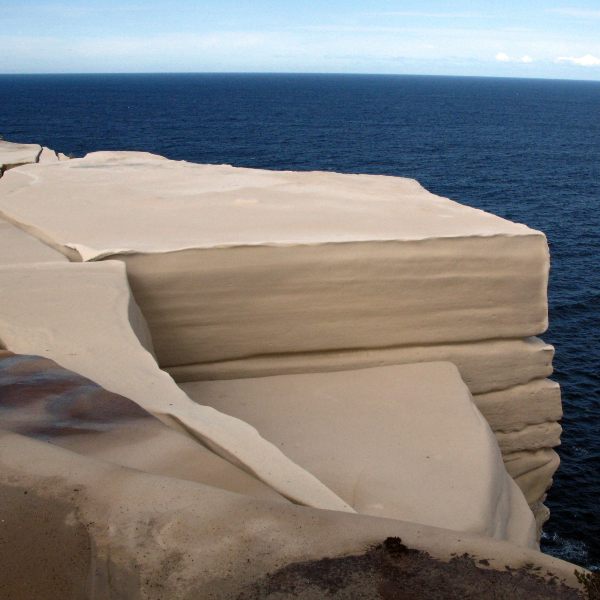
Top Walks in Royal National Park
- The Coast Track – a challenging 26km one day or two-day walk
- Winifred Falls Trail – a moderately easy 2km to a pretty small waterfall
- Karloo Pools – a moderate 5km walk to a lovely swimming hole and a small waterfall
- Jibbon Beach Loop – an easy 5km circuit with stunning coast views, rock art and shell middens
- Bungoona Lookout – wheelchair and pram accessible 900m return.
Where to eat
There is the Audley Dance Hall Cafe attached to the visitors’ centre. They offer an all-day menu, meaning you can enjoy a big breakfast after your hike. There is plenty of parking nearby.
At the Bundeena end of the park the Bundeena RSL Club, the Bowling club and a couple of cafes.
Where to stay in Royal National park
The Royal has three cottages for holiday rentals; Hilltop Cottage has lovely views over Port Hacking and sleeps six. Weemalah Cottage also overlooks Port Hacking and is a little more rustic but still lovely. Reids Flat Cottage at Audley is beautifully restored, with lots of great walks at your door.
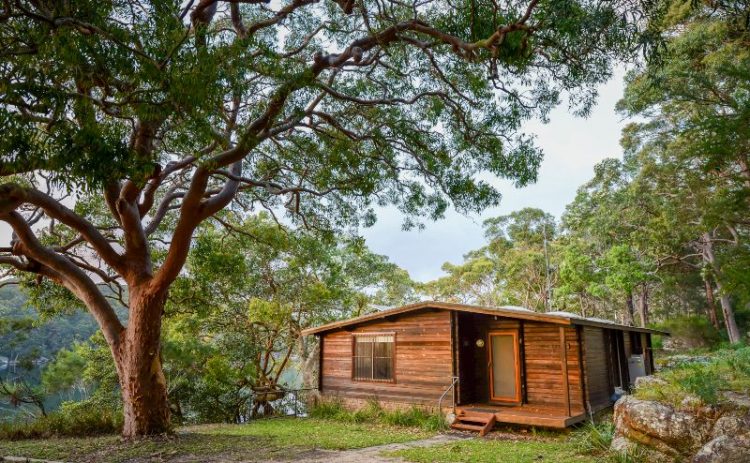
There are also some camping areas where you can settle in for a few days and explore the park more deeply. Bonnie Vale, one of the largest and easiest to access, is currently closed for restoration.
How to get to Royal National Park
The park is 36km south of the city centre and while a car makes it easy to explore; it has options for those who prefer not to drive.
By public transport: You can take the train to Cronulla and then jump on the ferry to Bundeena to explore the north of the park. This is a starting point for Jibbon Loop and the Coast track. There is also the Park Connections shuttle service from Sutherland train station to various points within the park.
By car: Once you reach Sutherland, you will see exits for the park. There are a few entry points to choose from. Loftus, the first one is best for Bundeena and Wattamolla. The second is at Waterfall, and this is the one you need for Figure 8 Pools and the best of the park’s beaches. The southernmost entry at Otford is best for exploring some of the less-visited tracks and sites.
Join a tour: There are 3 tour operators offering trips that include the Royal National Park.
- Nimble Tours offers a 10 hour tour that includes many of the Royal National Parks best spots.
- This private tour travels through the park stopping off at a lookout and a beach before travelling down the Sea Cliff Bridge and returning home via Symbio Wildlife Park
- This 11 hour tour also travels through the park before heading to Morton National Park in the Southern Highlands.
Heathcote National Park
This is a brilliant spot for some serious bushwalking. They grade the three main walks at level 4, making this park most popular with experienced hikers or those with good fitness levels.
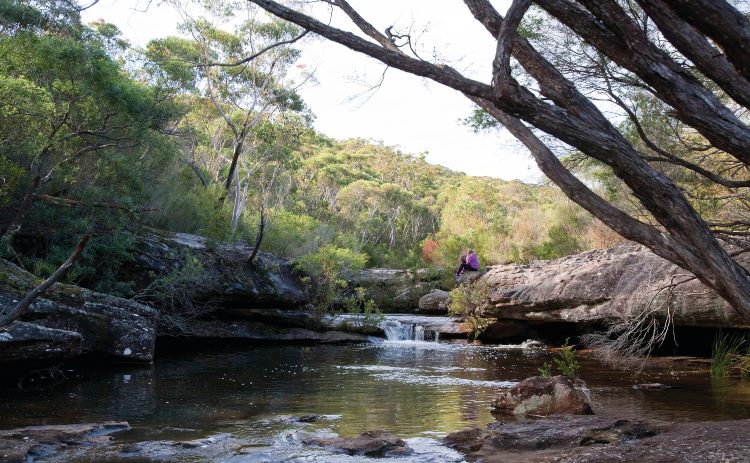
Highlights Of Heathcote National Park
The park’s main highlight is its swimming holes. Kingfisher Pool, Lake Eckersley, and Lake Toolooma are the major reasons people head to the park.
Top walks in Heathcote National Park
- Bullawarring walking track – 5.5km
- Pipeline Trail (pdf) – 9.5km also popular mountain bike trail
- Mooray walking track – 5km return
- Lake Toolooma trail – 5km
Where to eat
You need to bring everything with you; there are no facilities in the park. There are several shops at both Heathcote and Waterfall.
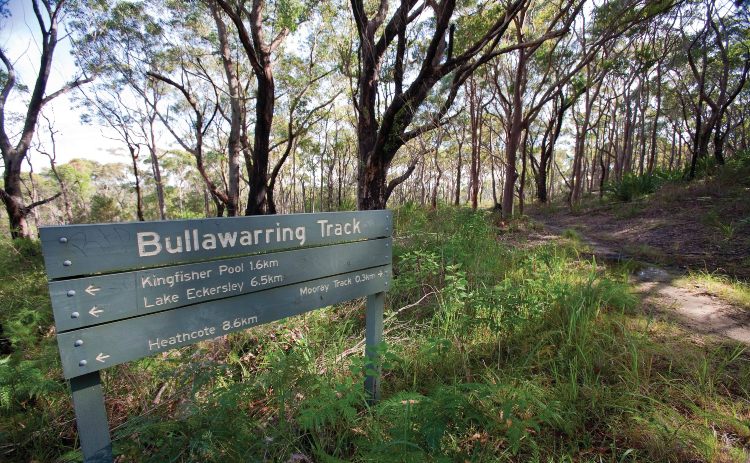
How to get there
The park is completely car-free. You can enter the park from Warrabin Street or Woronora Dam Road at Waterfall or Heathcote train station. Enter from Waterfall Station for Kingfisher Pool and Heathcote Station for Mirang Pool. Taking the train is a great way to explore the park with stations at either end.
Where to stay in Heathcote National Park
There are three camping areas in Heathcote National Park, they are all walk in sites with no facilities so you need to bring everything with you.
Dharawal National Park
One of the newer parks only joining the National Park family in 2012, Dharawal is probably the least known of the parks on our list. There are several important Aboriginal sites within the park, including rock engravings and drawings.
Highlights Of Dharawal National Park
The water holes and waterfalls are the main drawcards here. The walks are at grade 3 level and can be done with average fitness. There are also several mountain bike trails in the park.
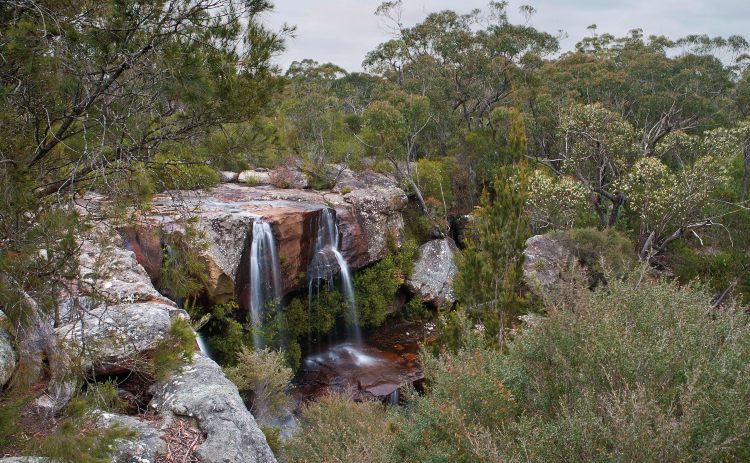
Top Walks in Dharawal National Park
- Jingga walking track and pool – 2.4km return walk
- Minerva Pool Walking track – 2.4km return walk
- Madden Falls Lookout – 750m each away
- O’Hares Creek Lookout – 2.8km pram and wheelchair accessible
The Tharawal Local Aboriginal Land Council asks that only women and children enter the waters of Minerva Pool.
Where to eat
Bring what you need with you. There are no shops inside the park. Best to stop in at Appin or Stanwell Tops, depending on which way you enter the park.
How to get there
You really need a car to visit Dharawal. There are three entry points to the park: Enter from the southern end of the park near Darkes Forest for Madden Falls; Wedderburn for Minerva Pool walking track. You can also enter from Appin. It’s not unusual to spot koalas and wallabies, and if you are lucky, you may even find a platypus!
Sydney National Parks Map
How much does it cost to visit a National Park?
All parks are free to enter on foot, but car access can be up to $12. Some parks are only $8, and some are free. We buy an annual pass each year, prices for these depend on how many parks you want to include in your pass.
Check out more great walks in and around Sydney
- Central Coast Walks
- Short Blue Mountains walks
- Coastal Walks in Sydney
- Easy Bush walks in Sydney
- Harbour Walks in Sydney
Have questions about things to see and do in Sydney?
Head over and join our Facebook Group and we will be happy to help
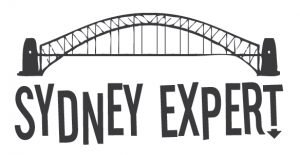
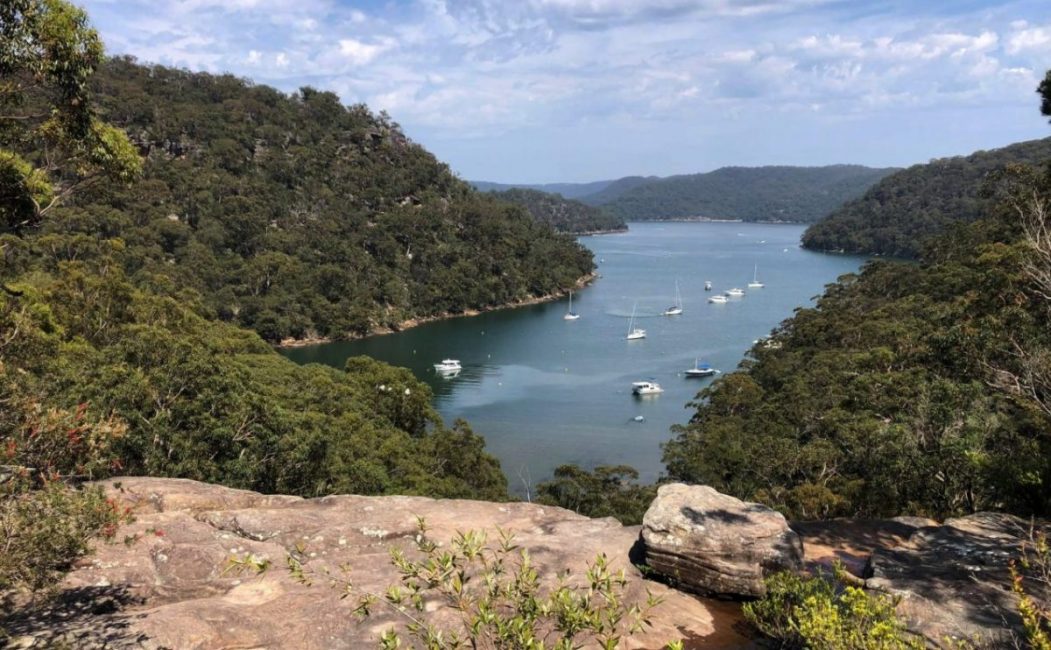
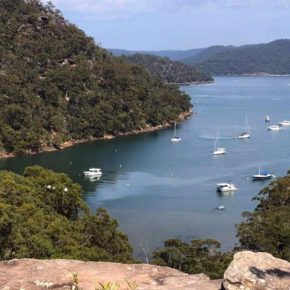
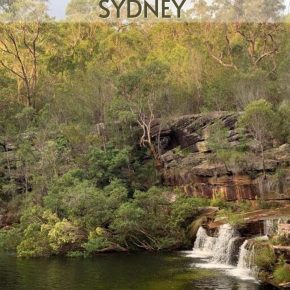
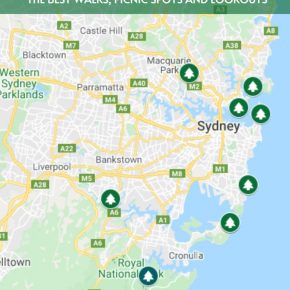
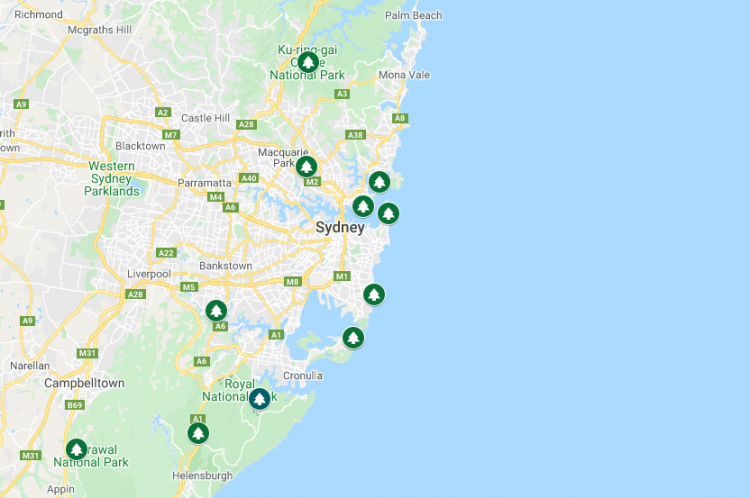
What a great guide. I wish I had this two years ago when I was there. But Australia and Sydney are high on my list to return to, so I’ll save this for future reference. Thank you!
Wow so many national parks in Sydney!! You’re so lucky. I hope you took advantage of them in 2020 shutdowns. I loved Sydney and Australia for its natural beauty.
Fantastic guide – especially adding in some lesser visited National Parks around Sydney. I literally just visited the Kurnell side of Kamay Botany Bay NP last week and was floored by how much history is there!
Great guide. Having grown up in Cronulla and catching the ferry to Bundeena regularly I love the Royal National Park and have spent many a day there. Looking forward to visiting some of the others on your list.
Some great information here getting out & about in Sydney
Hello
I am completing a 1,000km (Camino style) walk around the foreshores of Sydney (about 30% complete at this stage).
I am keeping a photographic record for later publishing as I go.
At the moment, I am in the process of walking around Port Jackson, and I wanted to be able to visit as many of the harbour’s islands as possible.
Can I arrange a (personalised ?) tour that would allow me to visit as many islands as I could – mainly for the purpose of taking photographs ?
Regards Clive
Hi Clive I am not really sure if you could do this. I would contact https://www.h2owatertaxis.com.au/ for a price